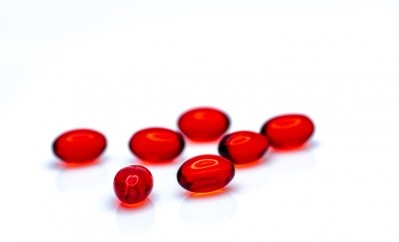Cost cutting helps algae producer Cyanotech post slim profit

Cyanotech was one of the early producers of spirulina algae at commercial scale. The company later branched out into Haematococcus pluvias cultivation to produce the antioxidant carotenoid astaxanthin at its facility on the Kona Coast of Hawaii’s Big Island.
Cyanotech was set up first primarily as a supply business, and was at one time a founding member of the Natural Algae Astaxanthin Association (NAXA). The company subsequently concentrated on a finished products strategy, selling spirulina and astaxanthin products under the Nutrex Hawaii brand name.
Cost cuts, output improvements yield small profit
Cyanotech has been growing algae in its seaside open ponds for many years. While that process is subject to fluctuations because of its open-to-the-atmosphere nature, the experience the company has gained has enabled it increase yields and cut costs, according to CEO Gerald R. Cysewski, PhD.
“We demonstrated achievement on multiple levels from the prior year: sales, margin, farm productivity, especially from our astaxanthin ponds, and the execution of cost cutting programs,” Cysewski said in a statement.
In its recent year end statement for its fiscal 2020, Cyanotech reported $31.9 million in net sales, compared to $30.2 million in the previous year. The cost cutting and efficiency improvements allowed the company to eke out $387,000 in net income, or 6 cents per diluted share, compared to a loss of $3.6 million, or 62 cents per share in fiscal 2019.
“We took several actions this past year to fortify our business and increase liquidity, including stabilizing production, postponing non-critical capital investments, and establishing cost controls to reduce spending in selling and general and administrative expenses going forward,” Cysewski said.
Will immune health craze help or hurt astaxanthin?
Some ingredients have, such as elderberry, echinacea, vitamin C and zinc, have benefited greatly from shifts in consumers’ interest during the current pandemic crisis. Some of these ingredients have been completely sold out in recent weeks. Any ingredient that can claim an immune health tie in has seen similar upticks in demand.
There has been little recent research into the effects of astaxanthin on the immune system. Astaxanthin supplier AstaReal has a page about the carotenoid’s beneficial effects on the immune system on its website, but most of the research it refers to support these statements was done in the 1990s and the most recent study was published in 2011. The connection seems to be astaxanthin’s purported ability to quell systemic inflammation, a situation which if left untreated can compromise immune system function. It’s an open question whether that line of reasoning will resonate with consumers seeking any port in the pandemic storm.
Cyanotech, for its part, is making no immune health claims on its astaxanthin. On the Nutrex Hawaii website, the company mentions skin, eye, joint, cardiovascular and sports recovery benefits.
Several years ago Scott Steinford, then head of NAXA, pegged the global astaxanthin market at about $100 million. At that time NAXA was projecting solid low to middle single digit growth figures for the years ahead. It’s impossible to say in the short term how much the fallout from the pandemic will change that outlook.
It remains then to be seen whether astaxanthin purveyors such as Cyanotech will prosper in the post pandemic environment. It’s still too early to say whether the frenzy over immune health supplements has cannibalized sales of other categories of products. Sales of certain sports nutrition categories, such as preworkouts, are reportedly down. But that seems to have more to do with structural changes in consumers’ activities, such as an inability to go to gyms, as opposed to the money for those purchases having been directed toward other kinds of supplements.
Stock price in doldrums
Stock traders have been mostly unimpressed by Cyanotech’s recent course, if movements in the company’s stock price are any measure. The company’s stock traded at more than $9 a share as recently as April of 2015. But it has suffered a gradual slide since then, with shares going for about $2.30 today.
















